Report
Achieving a Resilient Society that Looks Ahead to 2050
As societal and economic activities, manufacturing and distribution face a variety of challenges in an increasingly unstable global situation beset by natural disasters, conflict, and pandemic. It is against this background that The University of Tokyo and Hitachi, in April 2023, launched The University of Tokyo Institute for Digital Observatory for using data to monitor a variety of different social and economic activities around the world. The objective of the new organization is to make use of digital data to keep track of societal and economic activities internationally, thereby enhancing the resilience of national and corporate activities through early risk identification and response.
On October 10, 2023, the institute and Hitachi jointly hosted a forum to mark the launch of the digital observatory: “Achieving a Resilient Society that Looks Ahead to 2050.” This article reports on the presentations given at the forum.
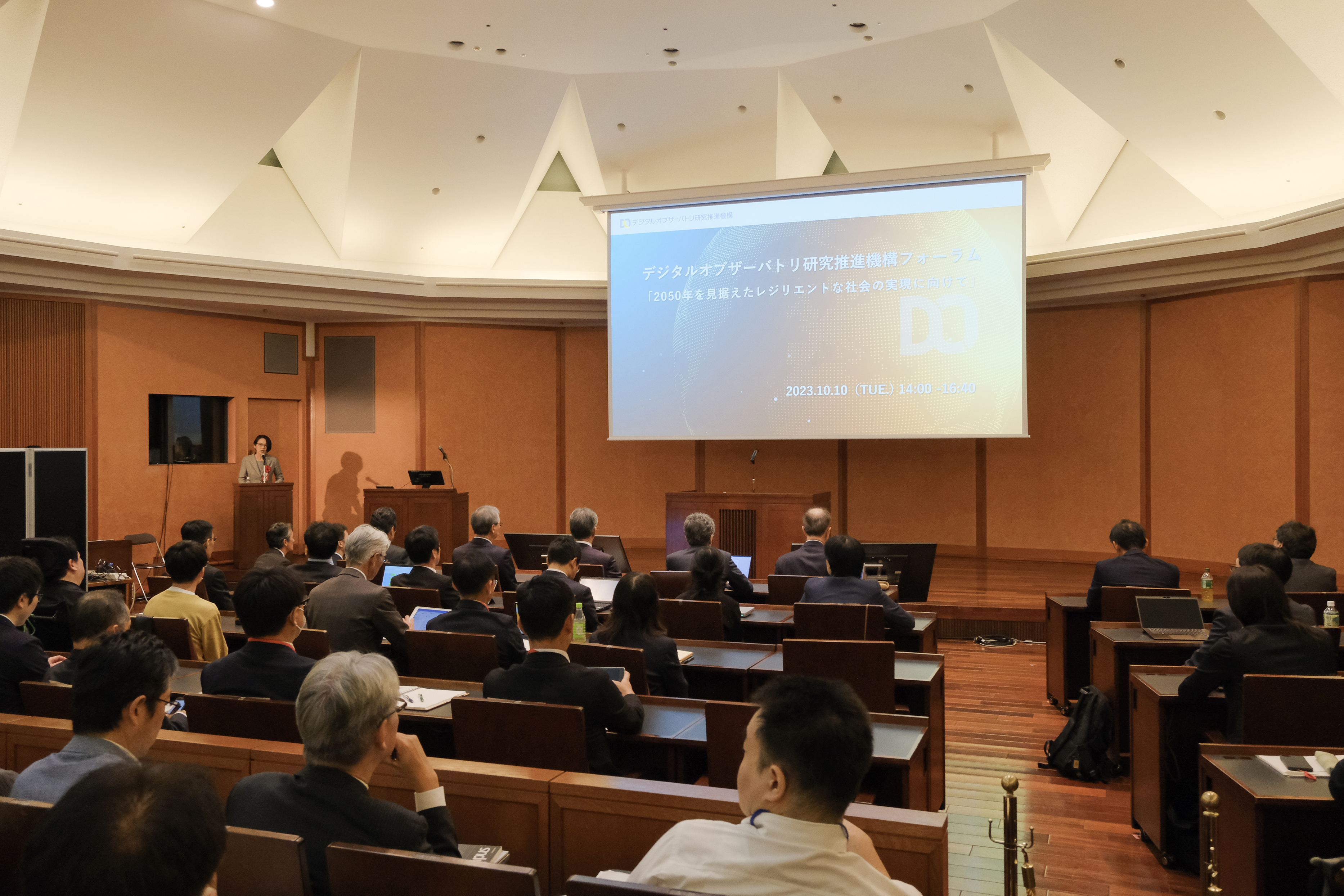
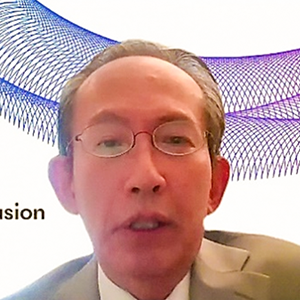 Masaru Kitsuregawa
Masaru Kitsuregawa
Director, Institute for Digital Observatory
University Professor, University of Tokyo
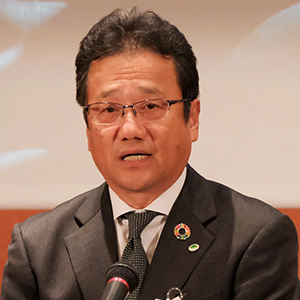 Jun Abe
Jun Abe
Senior Vice President and Executive Officer, Hitachi, Ltd.
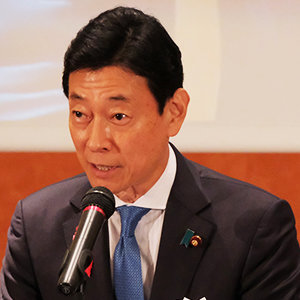 Yasutoshi Nishimura
Yasutoshi Nishimura
Minister of Economy, Trade and Industry
The forum commenced with a welcoming address from the institute head, Masaru Kitsuregawa, a professor at The University of Tokyo who spoke about the university’s Data Integration and Analysis System for non-stop 24-hour live observation of the Earth. Professor Kitsuregawa made the following comments.
“This century has been termed the ‘age of observation,’ with observational capabilities that now dramatically outstrip what the 20th century was able to accomplish. Our ability to observe has been given a boost by live image acquisition. In the field of civil defense, for example, learning the many different behaviors of river systems enables detailed inundation predictions to be made. By utilizing multi-modal large language models (LLMs) and the careful observation of nature, conflicts, and other phenomena, the purpose of the institute is to create technologies for building resilient societies that do not put constraints on how people live their lives.”
In collaboration with various government agencies, the institute has set out to identify global trends through the observation of information in numerous forms, including an analysis of supply chain stresses that utilizes the visualization of an international input-output chart encompassing 190 countries and an analysis of import and export dependencies derived from trade data sourced from organizations such as the United Nations (UN).
The next speaker was Hitachi Senior Vice President and Executive Officer Jun Abe who spoke about the reasons why the two organizations were collaborating on the digital observatory, touching on Hitachi’s progress in the data storage field and its joint research with The University of Tokyo that has been ongoing for more than 20 years in data storage as well as work on resolving societal challenges.
“Given the changing circumstances in which social and economic activity is taking place, as epitomized by the COVID-19 pandemic, the question of how this will impact our lives has become a new issue for society to address. By leveraging Hitachi’s strength in data processing and the experience that we have acquired through the delivery of a wide range of services and solutions, we intend to utilize the digital observatory to create new forms of value to support social and economic activities that confront relentless change.”
Yasutoshi Nishimura, Minister of Economy, Trade and Industry, offered his congratulations on the launch of the institute with the following comments.
“What really brought home the importance of data to me was when I served as the Minister in charge of Measures for Novel Coronavirus Disease in 2020 when the COVID-19 pandemic was just starting. The use of posts on social networking services (SNSs) to analyze people’s behavior played a part in subsequent policy formulation and restrictions on activity. This reinforced for me the vital role of data in resolving societal challenges. Together with difficulties caused by the interruption of supply chains, the pandemic brought the concept of economic security into international focus. If we are to establish robust supply chains, then Japan too needs to put appropriate laws in place and build a self-sufficient economic structure. As we seek to further enhance economic security, I will be paying close attention to the work of the Institute for Digital Observatory.”
The first item on the program was a discussion between Teruo Fujii, President of The University of Tokyo and Keiji Kojima, Representative Executive Officer, President & CEO of Hitachi, Ltd.
A video on what the Institute for Digital Observatory had been set up to accomplish and the work it is doing was followed by a discussion moderated by the institute’s deputy director, Masashi Toyoda, on how data and digital technology should be used to create the sort of society and economy we want in 2050.
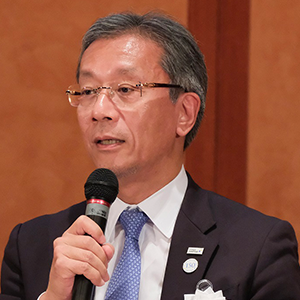 Teruo Fujii
Teruo Fujii
President, The University of Tokyo
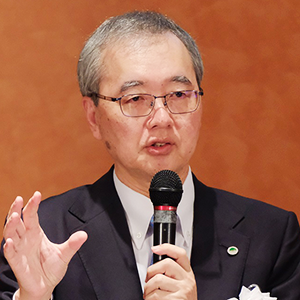 Keiji Kojima
Keiji Kojima
Representative Executive Officer, President & CEO
Hitachi, Ltd.
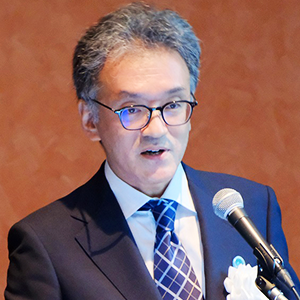 【Moderator】
【Moderator】
Masashi Toyoda
Deputy Director, Institute for Digital Observatory
Professor, Institute of Industrial Science, The University of Tokyo
Toyoda:Having identified the building of a resilient society as a goal on the path to 2050, the Institute for Digital Observatory monitors and studies digital data on the many factors that impact supply chains. From your respective perspectives representing a university and a corporation, could you each talk about the society and economic activity you envision for 2050?
Fujii:If we are to obtain a broad view of the correlations between different phenomena, I believe it is essential that we work with a large number of people. This involves using the information contained in SNS posts on what the public are thinking to keep track of current issues and come up with ideas on what sort of arrangements we should be putting in place. I expect this will be just as important when thinking about the society and economy of 2050. Behind the success of the large IT platform businesses that have taken the world by storm in recent times, I believe there is a way of doing business that maintains close contact with users. I expect the same will be expected of public services in the future.
Another line of thinking in academia that has arisen recently is of “ethical, legal and social issues” (ELSI). When developing and implementing new technologies, this calls upon us to question those technologies’ ethical and social impacts. In practice, however, it is very difficult to predict how social and economic systems will be affected by a particular technology. This is because the individual problems are addressed in isolation from one another. Of particular significance in the lead-up to 2050, I believe, will be to interconnect across different fields, by which I mean having effective ways of anticipating what might happen and by what process of cause and effect.
Kojima:When it comes to creating an economy capable of sustainable growth by 2050, two major threats have manifested themselves already. The first is that economic activity is starting to exceed planetary boundaries. The second is that our well-being as human beings is in doubt. The question is being asked, “Are people really happy?” Achieving economic growth without well-being defeats the purpose, I would say. While the question of what to do to overcome these two threats is a difficult one, I believe that targets for the intermediate milestone of 2030 are important. We need to change the directions we are going in many different areas and establish a clear trajectory for turning things around.
That all of our attention is currently occupied by immediate challenges amid a deluge of problems that include pandemics and conflict is a result, one might say, not so much of newly manifesting risks, but of having failed to pay attention to problems that have been around for a long time. Meanwhile, those risks are now coming to pass also.
A key question to address if we are to create an ideal society in 2050 is how to bring to light those things that are happening right now but that we have failed to recognize, and how to start addressing them. In this regard, I would like to put this concept of a digital observatory to work in our business.
Toyoda:The Institute for Digital Observatory has set out to address a wide variety of issues by monitoring data and putting it to use. In relation to its activities, are there any of these issues you would like to raise in particular? Also, please tell us about your expectations for new technologies such as generative artificial intelligence (AI).
Kojima:I see generative AI as really a major breakthrough that will impact all sorts of knowledge work done by humans. For ourselves, generative AI raises two questions that will become the basis of competition. The first is how to collect the text and insights that are the inputs of generative AI and large language models (LLMs). The second is in which applications will LLMs deliver genuine value. Given this context, how to obtain the data is of extreme importance. In a world that is awash with data, the process of collecting and analyzing the many different forms of this data and using it in conjunction with meaningful insights as an input to generative AI will be crucial. This is where I believe the digital observatory can deliver the greatest benefits.
Fujii:A key point, I believe, is how to incorporate important data that is difficult to acquire in digital form, what you might call the “hard-to-hear voices.” One example is the challenge of acquiring information from the most upstream reaches of supply chains in emerging nations and linking it together. The University of Tokyo is strengthening student exchanges between us and universities in Africa and Southeast Asia based around social entrepreneurship, because it is important to actually go to these places to see what is happening on the ground. We need to realize that, through its cumulative effects, data in itself is hugely powerful.
Moreover, there is scope for adopting a quantum way of thinking whereby the collection of large amounts of data from a wide range of fields enables many different time series to be observed simultaneously. In doing so, the correlations between them can be used to find out what is going on. I expect there is scope for crossover with the field of quantum computing.
Toyoda:Finally, could you please say a few words on the future of the digital observatory?
Kojima:In this era when digital technology is flourishing, it is important to distinguish between those areas that are subject to competition and those that are not. At Hitachi, we see the monitoring and analysis of digital data as belonging to the non-competitive realm. In areas like this, the public sector, academia, or companies should collaborate on creating the digital observatory. My hope is that we can get more people involved and expand our scope to make the digital observatory a reality under the leadership of its director, Masaru Kitsuregawa.
Fujii:At The University of Tokyo, we are guided in our daily activities by our philosophy of wanting to be an institution that brings together stakeholders from throughout the world. In the sense of expanding the scope of data, some of which will be open and some closed, we intend to do our best to forge these links as widely as possible across the world’s many different places, organizations, and sectors. My hope is that we can combine the expertise that The University of Tokyo has built up in sociology and many other academic fields to listen to the “hard-to-hear voices” and transform this data into a strength for Japan. Thank you for your time today.
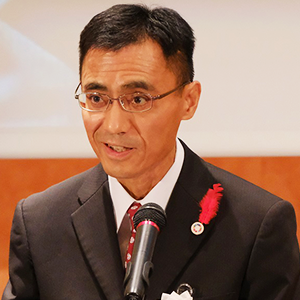 Hideya Yamada
Hideya Yamada
Director-General, Statistics Department of the Minister's Secretariat, Ministry of Agriculture, Forestry and Fisheries
The discussion was followed by a message from Hideya Yamada, who heads the Statistics Department of the Minister's Secretariat at the Ministry of Agriculture, Forestry and Fisheries. Mr. Yamada touched on several issues, including Japan’s low level of food self-sufficiency and how the aging population and declining birthrate are shrinking the workforce in agriculture, forestry, and fisheries. He also discussed the ministry aims to revise the Basic Law on Food, Agriculture and Rural Areas with a focus on strengthening food security, and had the following to say about the hope of close working with the Institute for Digital Observatory and the timeliness of its launch.
“We have been visiting the Institute of Industrial Science at the Komaba Campus to exchange views with the University of Tokyo academics since the Institute for Digital Observatory’s inception. The work they have done for us analyzing trade in products such as vegetables or fertilizer has given us an appreciation for the importance of this data platform. We look forward to even higher levels of collaboration between industry, government, and academia”
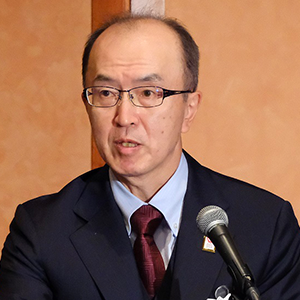 Itaru Nishizawa
Itaru Nishizawa
Vice President, Executive Officer, and CTO, Hitachi, Ltd.
Next on the program were presentations on the vision of the Institute for Digital Observatory given by Deputy Director Masashi Toyoda and Hitachi Vice President, Executive Officer, and CTO Itaru Nishizawa.
Deputy Director Toyoda spoke about the digital observatory’s research goal of building a resilient society through the early identification and avoidance of serious risks, stating that the three key pillars of this work were the development of core technologies for monitoring social and economic activity, the establishment of platforms for putting the observed data to use, and the use of data as a basis for creating value (supply chain resilience, diversity and inclusion, and being nature positive and opportunity seeking). He described how research at the institute combined both the arts and sciences and was established on the basis of collaboration not only among the eight groups at The University of Tokyo, but also with external organizations such as Hitachi, the University of Tsukuba, and the National Institute of Informatics. He also mentioned the ongoing discussion of future plans being held with relevant government agencies (the Ministry of Economy, Trade and Industry and the Ministry of Agriculture, Forestry and Fisheries among them) with a view to putting the work done by the institute to use across a wide range of fields, including the analysis of data on social activity, multimedia analysis, and global social risk analysis. The presentation also covered the observation platform for supply chain resilience, one of the major research topics at the institute (see Figure 1 and Figure 2).
Figure 1 Visualization of Chokepoints Using an Input-Output Chart of International Industry  The input-output chart of international industry collates data on the import and export of goods by industrial sector, combining trade statistics and data on industrial inputs and outputs published by different countries. The system visualizes the chart in the form of a nested network that users can expand to view the detailed industrial inputs and outputs of specific countries. By highlighting the sectors where a country is dependent on imports, it gives an overview of where the chokepoints lie in its industrial structure.
The input-output chart of international industry collates data on the import and export of goods by industrial sector, combining trade statistics and data on industrial inputs and outputs published by different countries. The system visualizes the chart in the form of a nested network that users can expand to view the detailed industrial inputs and outputs of specific countries. By highlighting the sectors where a country is dependent on imports, it gives an overview of where the chokepoints lie in its industrial structure.
Figure 2 Example Analysis of Trade Statistics  This analysis based on the UN Comtrade database of global trade statistics shows trends in the state of international trade. The graph presents an analysis of trade in Ukrainian sunflower oil and shows how both the quantity and destinations of exports underwent a major change since the Russia-Ukraine invasion started.
This analysis based on the UN Comtrade database of global trade statistics shows trends in the state of international trade. The graph presents an analysis of trade in Ukrainian sunflower oil and shows how both the quantity and destinations of exports underwent a major change since the Russia-Ukraine invasion started.
Deputy Director Toyoda also spoke about the collaborative arrangements between the research teams studying supply chain resilience and diversity and inclusion respectively. Acknowledging that addressing the issues of data integration and immediacy will be important challenges for the future, he expressed his hopes for further collaboration both inside and outside the university along with future international initiatives.
Next, Hitachi CTO Itaru Nishizawa spoke about Hitachi’s goal of using data and technology to create a sustainable society, the future directions of its research and development programs, and the growth cycle based on Lumada that supports well-being and economic activity in a way that does not exceed planetary boundaries. He then went on to recount how the Institute for Digital Observatory came to be established and the specific issues being raised.
On the importance of supply chain resilience, he noted the need for more extensive risk monitoring, referencing how the impacts of the COVID-19 pandemic and geopolitical risk are visible in the global supply chain pressure index*1. Making the point that geopolitical risk is not easily dealt with by individual companies acting alone, he spoke of Hitachi’s vision for responding to the factors that drive uncertainty in supply chains and the three different ways in which it wants to enhance resilience through the visualization of risk accomplished by integrating data from diverse sources, including both in-house and open data. These are: (1) identifying risks before they manifest, (2) minimizing the loss of capabilities that occurs during emergencies, and (3) speeding up the return to normality in the aftermath of an emergency.
On the topic of collaboration between Hitachi and The University of Tokyo, he talked about taking advice from the eight teams on matters such as strengthening the resilience of supply chains to climate change and analyzing supply chains in the agricultural and food industries to track the impacts of events of a national or regional nature that would be difficult for Hitachi on its own. As a representative example, he quoted the work being done on combining maps of material flows and resources with maps of conflicts to assess the risk of conflicts over minerals (see Fig. 3).
Mr. Nishizawa concluded by discussing plans to put research findings obtained in partnership with the Institute for Digital Observatory to use in TWX-21, Hitachi’s cloud-based software-as-a-service (SaaS) product for business-to-business transactions that is available as a Lumada solution with more than 85,000 corporate users. Through improvements to the service made by incorporating work done at the digital observatory, this will add corporate value for customers in its role as a supply chain platform that draws on data from across different organizations, thereby helping to achieve digital transformation.
Figure 3 Risk Assessment of Conflicts over Minerals  The 2023 coup d'état that took place in Niger, a uranium producing country, has had a major impact on the supply chain for France’s nuclear power industry. The figure above shows a map of conflict zones overlaid on a map of mineral deposits. Equipping such a map with the flexibility to be drawn both on a global scale and focused on particular areas of interest calls for highly sophisticated data management. Hitachi is currently developing technology to plot an interactive map of the world that shows 10 or more risk indicators spanning hundreds of thousands of data points.
The 2023 coup d'état that took place in Niger, a uranium producing country, has had a major impact on the supply chain for France’s nuclear power industry. The figure above shows a map of conflict zones overlaid on a map of mineral deposits. Equipping such a map with the flexibility to be drawn both on a global scale and focused on particular areas of interest calls for highly sophisticated data management. Hitachi is currently developing technology to plot an interactive map of the world that shows 10 or more risk indicators spanning hundreds of thousands of data points.
The vision presentations were followed by six “Lightning Talks” given by experts in their fields. The following are summaries of these presentations.
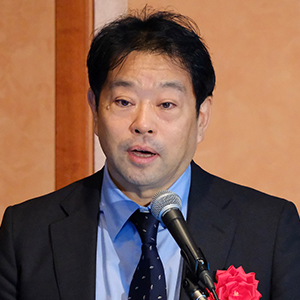 Sadao Kurohashi
Sadao Kurohashi
Director-General, National Institute of Informatics and Specially Appointed Professor, Kyoto University
Noting that the goal of the Institute for Digital Observatory is to observe and utilize diverse forms of data, Sadao Kurohashi, Director General of the National Institute of Informatics and leader of the institute’s natural language processing group, made the point that, by translating numeric data into a language that humans can understand, the trends and other meaningful content embedded in it on things like transaction volumes and production quantities can be turned into important sources of information. Expanding on this topic, he talked about the dramatic advances in language understanding by LLMs brought about by generative AI, observing that, were the potential for using Generative Pre-trained Transformer 4 (GPT-4)*2 to extract and structure information to be realized, it would become a major strength. Accompanying this, he also mentioned current concerns about AI being a black box and how some of the research institutions and companies engaged in the development of generative AI have established an oligopolistic position. The National Institute of Informatics has been building its own language models to ensure the reliability and transparency of generative AI and is working on elucidating the principals involved.
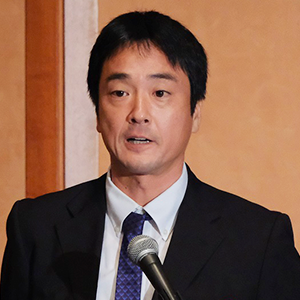 Takuto Sakamoto
Takuto Sakamoto
Professor, Graduate School of Arts and Sciences, The University of Tokyo
Based on their mission of analyzing the risks for global society, Professor Takuto Sakamoto of the Graduate School of Arts and Sciences at The University of Tokyo has been working with his team made up largely of graduate students to understand and predict sociopolitical events with the potential to threaten global supply chains. He recounted specific examples of conflict event data and explained the data generation process where the goal is to collect and map their own data together with existing open data on events such as conflicts, human rights violations, and political instability. They then draw on the expertise of different team members to produce quantitative predictions of global risks that are complemented by contextual information for interpreting what they mean. Given the effort and expense required to produce this data, he explained how he wanted to automate the process of generating it to make it more efficient and timelier, as well as making up for the gaps where current data is inadequate.
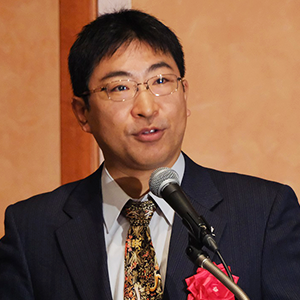 George Shishido
George Shishido
Professor, Graduate Schools for Law and Politics, The University of Tokyo
Professor George Shishido of the Graduate Schools for Law and Politics at The University of Tokyo spoke about how the medium- to long-term research goals of the Institute for Digital Observatory would contribute to enhancing the performance of the legal system, improving the efficiency of corporate activities, and advancing the sustainability of the public environment by presenting new insights and perspectives based on data analysis results that have been collated and made available through the establishment a comprehensive data analysis platform for legal and political studies. He also mentioned the institute’s more immediate goals of identifying, evaluating, and collating the risks evident in international rules on free trade. In this regard, he gave an overview of current projects that include research on trade policy and on the impacts that factors such as the global situation are having on trade, explaining how, by using data to highlight the different risks, they were seeking to offer meaningful perspectives on what companies are doing about risk reduction and the formulation of relevant policies by government.
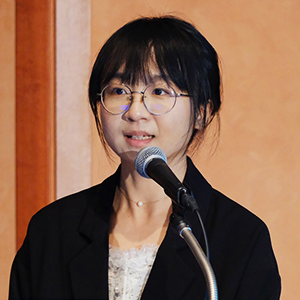 Zhao Han
Zhao Han
Majoring in Civil Engineering at the School of Engineering, The University of Tokyo
The next presentation was by Zhao Han, a civil engineering major at The University of Tokyo School of Engineering who is engaged in research under the supervision of Professor Akiyuki Kawasaki of the university’s Institute for Future Initiatives. Talking about the connections between worsening climate change and economic activity, she made the point that, based on the distribution of national CO2 emissions, the lower a regions’ greenhouse gas emissions, the more vulnerable it tends to be to climate change, and that importing and consuming regions (primarily developed nations) are passing off their environmental load onto producing and exporting regions (primarily emerging nations). On this basis, she argued that accurately assessing the relationships between economic activity and climate change would be essential to building fairer and more sustainable supply chains. She presented the results of analysis using the Environmentally Extended Multiregional Input-output (EE-MRIO) tables that was aimed at bringing to light the impacts that each nation’s trading activities are having on the global environment. She also explained how, by pursuing further analysis and visualization efforts that combine datasets relevant to climate change risk, she hopes to identify regions where the risks are high, share information with stakeholders, prioritize policy making, and supply predictions to minimize losses.
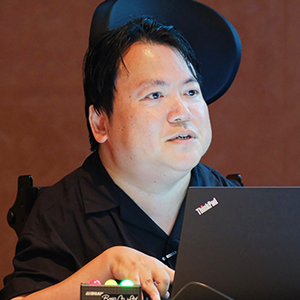 Shinichiro Kumagaya
Shinichiro Kumagaya
Associate Professor, Research Center for Advanced Science and Technology, The University of Tokyo
In the next session, Associate Professor Shinichiro Kumagaya of the Research Center for Advanced Science and Technology at The University of Tokyo, who himself has cerebral palsy, spoke on the theme of diversity and inclusion with a particular focus on disabilities. He reported on the current situation and challenges of inclusion that exist with reference to the percentage of disabled students at higher education institutions and how their numbers are trending. Pointing out that inclusion means creating an environment in which those people around them make allowances for the ways in which people with diversity struggle, where they can also express the capabilities in which they excel, Associate Professor Kumagaya went on to make the point that measuring progress on inclusion posed difficult challenges. Touching on changes in the environment for disabled people and the correlation between diversity and performance found in the results of past surveys on inclusion, he also expressed his desire to engage in the digital observatory processes as part of activities that bring greater transparency to the state of Diversity, Equity and Inclusion (DEI) at national universities and use people’s concerns as a force for inclusion.
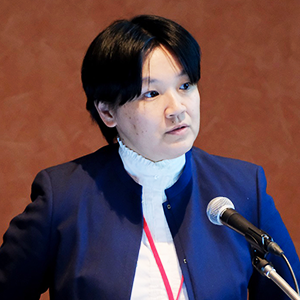 Rie Shigetomi YAMAGUCHI
Rie Shigetomi YAMAGUCHI
Associate Professor, Graduate School of Information Science and Technology, The University of Tokyo
Associate Professor Rie Yamaguchi, who studies information security and privacy protection at the Graduate School of Information Science and Technology at The University of Tokyo, spoke about her desire to use techniques for anomaly detection and pattern analysis based on people’s lifestyles in the research work of the digital observatory. She showed how there are links between various global events and divergences in time-series data. As an example of analyzing such data, she showed how many of the events going on at the time showed up in data, such as the movements of vessels arriving and departing the Ukrainian port of Odessa and the trend In Ukraine’s net external assets. Noting that this characteristic was a close fit with the goals of the Institute for Digital Observatory, she talked about how she wanted to match anomalies in time-series data with events in the news, to eliminate noise in the data with the help of advice from other team members, and to uncover correlations between global events.
 Nobuhito Saito
Nobuhito Saito
Executive Vice President, The University of Tokyo
The closing address was given by Nobuhito Saito, Executive Vice President of The University of Tokyo, who recounted the background to the establishment of the Institute for Digital Observatory and the forum’s program, saying that the institute’s mission was not just to observe, but also to collect and analyze data and use it to identify what actions to take next. Expressing his desire to create an organization that can respond quickly and dynamically to an unpredictable global situation, he had the following to say.
“Social and economic activities such as manufacturing, production, distribution, and services are subject to a wide variety of risks relating to the environment, society, and governance. Moreover, these risks have become an international issue over recent years, having been further exacerbated by COVID-19 and geopolitical risk along with human rights issues and the destruction of natural capital in emerging nations. With supply chains having been disrupted by a range of developments, including the Russia-Ukraine conflict, Japan as a whole should benefit if we can shed light on the complex ecosystems of industry by leveraging digital capabilities for broad-based monitoring that addresses questions such as where to source parts and other inputs, what to produce, and where to sell it.”
Building on this, he talked about initiatives for practical industrial applications whereby industry and academia work in partnership to explore this new academic field, monitoring huge and diverse volumes of data that extend from statistics published by national and local government, companies, and other organizations to numerical data collected from sensors in the real world and the large amount of text that flows daily across SNSs.
The information provided in this article including job titles or names of organizations is as of September 2023.